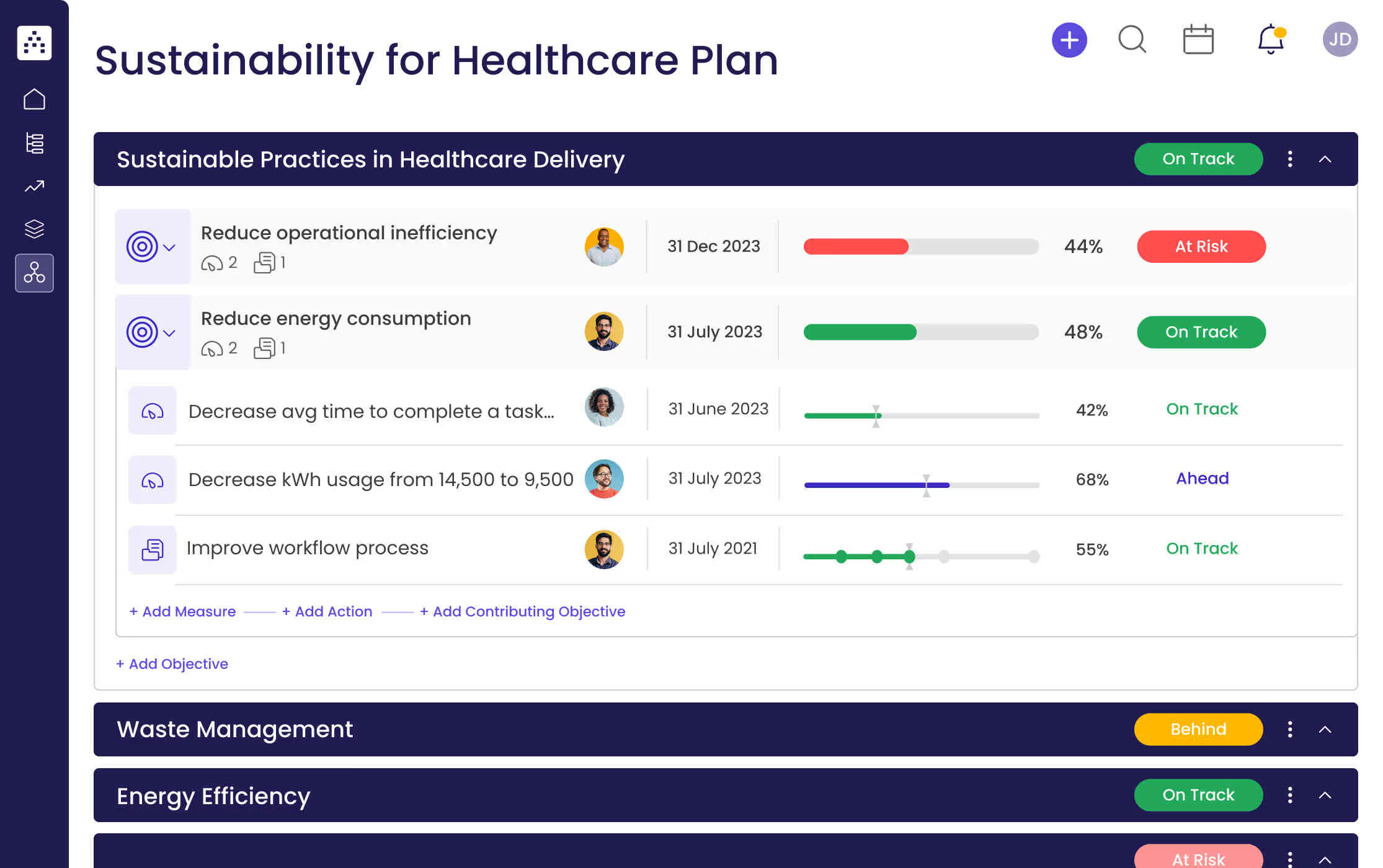What is a Sustainability Plan for Healthcare?
A sustainability plan for healthcare is an organized plan that outlines the goals and strategies for a healthcare organization to become more sustainable. This includes implementing initiatives that reduce waste, energy usage, and operational inefficiencies, while also improving community health. The plan should be tailored to the specific needs and capabilities of each organization.
What's included in this Sustainability Plan for Healthcare template?
- 3 focus areas
- 6 objectives
- 6 projects
- 6 KPIs
Each focus area has its own objectives, projects, and KPIs to ensure that the strategy is comprehensive and effective.
Who is the Sustainability Plan for Healthcare template for?
This template is for healthcare organizations, hospitals, and medical facilities that are looking to create a sustainability plan. The plan will focus on sustainable practices in healthcare delivery, waste management, energy efficiency, and community health.
1. Define clear examples of your focus areas
When creating your plan, the first step is to define the focus areas that you want to address. These focus areas should be specific to the needs of your organization. Examples could include Sustainable Practices in Healthcare Delivery, Waste Management, Energy Efficiency, and Community Health.
2. Think about the objectives that could fall under that focus area
Next, you should identify the objectives that should be addressed under each focus area. These should be measurable goals that your organization can work toward. For example, if your focus area is Sustainable Practices in Healthcare Delivery, your objectives could be to reduce operational inefficiency and energy consumption.
3. Set measurable targets (KPIs) to tackle the objective
After identifying the objectives, you should set measurable targets, also known as key performance indicators (KPIs), to track progress. For example, you could set a target to reduce the average time to complete a certain task from 1.5 hours to 1 hour. This target should include a unit of measure (in this case, “hours”) and an initial and target value.
4. Implement related projects to achieve the KPIs
Once the targets have been set, you should identify projects that will help you achieve the KPIs. For example, if you want to reduce energy consumption, you could implement a project to install more efficient light fixtures.
5. Utilize Cascade Strategy Execution Platform to see faster results from your strategy
Cascade Strategy Execution Platform is a powerful tool that can help you track and manage your strategy. With Cascade, you can monitor your progress, identify opportunities for improvement, and quickly respond to changes in your environment.


